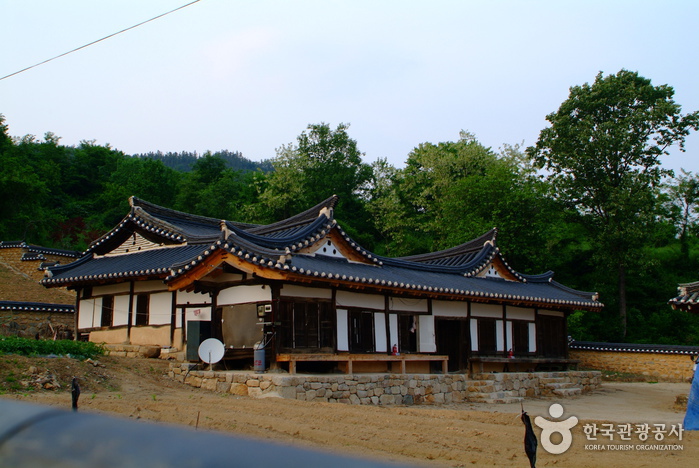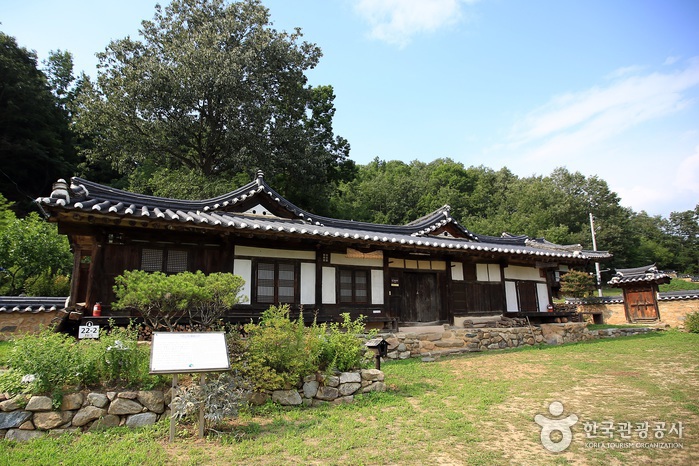Head House of Pansagongpa Branch of Pyeongsan Sin Clan (청송 평산신씨 판사공파 종택과 분가 고택)
12.9Km 2021-12-08
16, Jungdeul 2-gil, Cheongsong-gun, Gyeongsangbuk-do
+82-54-870-6247
Located in Cheongsong-gun, Gyeongsangbuk-do Province, Head House of Pansagongpa Branch of Pyeongsan Sin Clan is the head house of the noble Pyeongsan Sin family line. The house was created by Sin Han-tae during the reign of King Sukjong (1674-1720) of the Joseon dynasty. Since its construction centuries ago, the house has been inhabitated by the descendants of Sin Deuk-cheong, the 15th eldest grandson of General Sin Sung-gyem. This house has all of the features of an upper–class house of the Joseon period. The buildings of the house are built in a rectangular shape, with the courtyard in the center. The compound consists of Soteuldaemun (high-rising gate), Haengrangchae (servants’ quarters located next to the gate), Gotgan (storeroom in which grain and other items were stored), Anchae (room for the female family members) and a pavilion.
Seobyeok Historic House (서벽고택)
13.0Km 2021-11-01
22-2, Jungdeul 2-gil, Cheongsong-gun, Gyeongsangbuk-do
+82-54-870-6247
Located in Jungpyeong-dong at the family village of the Pyeongsan Sin clan, the Seobyeok Historic House was originally created when Sin Hanchang, a scholar from late Joseon dynasty, got married and moved out of his parents’ house. The house was expanded by Sin Chigu in 1739. The house and is built in a rectangular shape with 6 kan (traditional Korean measurement; space between two pillars) in the front, 4 kan on the sides and a courtyard in the middle.


 English
English
 한국어
한국어 日本語
日本語 中文(简体)
中文(简体) Deutsch
Deutsch Français
Français Español
Español Русский
Русский